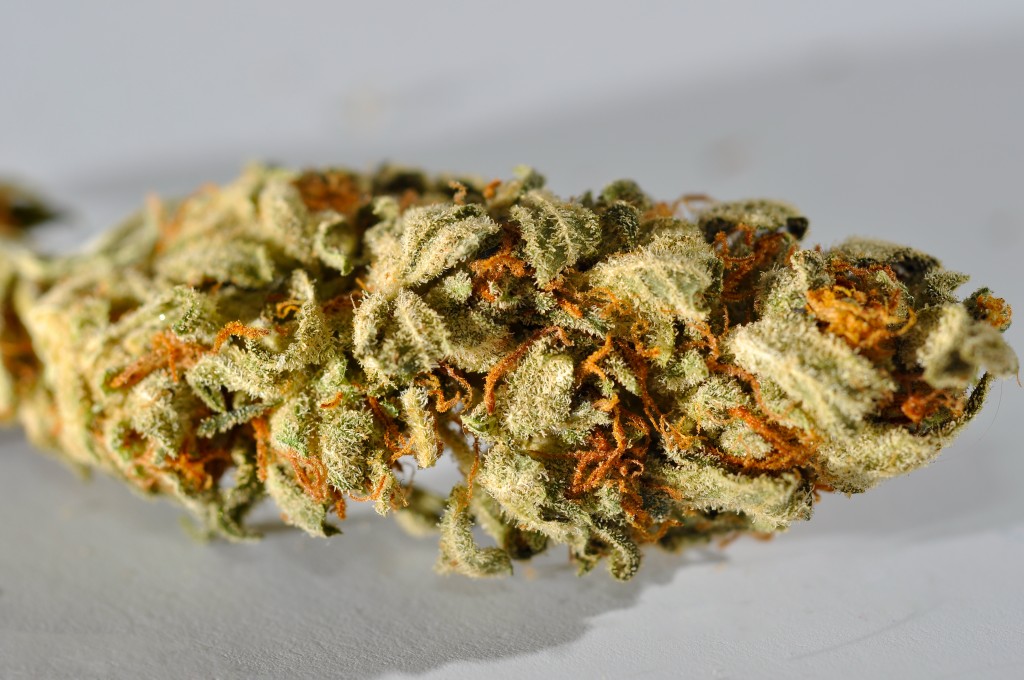Katelyn Baker
Well-Known Member
Before cannabinoid testing and genetic profiling of the cannabis plant, consumers would judge a batch of weed based on its smell, taste, and color. In fact, a whopping 93 percent of buyers make a purchasing choice contingent on the color and look of the bud.
The color of cannabis is not constant, but rather changes with the plant's maturity. According to the pH or acidity levels of the plant, its anthocyanins - water-soluble pigments - may appear blue, red, or purple. Anthocyanins appear in other plants as well, such as blueberries and eggplants.
The color of a cannabis plant is also influenced by temperature: In cooler environments, the plant produces less chlorophyll, green pigments critical to photosynthesis, which allows a plant to absorb energy from light. The colors of cannabis can be manipulated by managing the acidity levels and temperatures in which the plant is bred. Altering these various levels can bring out different colors and qualities, while inhibiting others.
One of the most popular alternatives to green is purple - think Granddaddy Purple. Purple pigments occur fairly easily in the cannabis plant, as it begins to lose chlorophyll as it matures into old age. However, before the bud gets too old, purple pigmentation can also be engineered in neutral pH environments.
Reddish strains are harder to come by, but can be bred by manipulating nutrients and depriving the plant of phosphorus. The darker, even black appearing strains, are caused by an excess of pigmentation in the cannabis' leaves. These strains are also known for more intense visuals and psychedelic highs. They usually thrive in somewhat cooler temperatures, since in warmer environments the dark, deep reds and purples may become lighter.
Yellow strains, such as Lemon Kush, thrive in more alkaline conditions. Similarly, as the chlorophyll fades, if the plant is genetically predisposed for yellow pigmentation, the golden hues may come out later in the plant's life, as well. If a plant has a lower number of anthocyanins, it may produce yellow, gold, and earthy hues from carotenoids, pigmentation molecules also present in carrots, autumn leaves, and tomatoes.
Cannabis produces anthocyanin, part of the flavonoid [plant pigmentation] family, for protection, according to a study. "Flavonoid accumulation [is] involved in many aspects of the plant growth including pathogen resistance, pigment production, and protection against ultraviolet radiation, which contributes to the growth of pollen and seed coat development," researchers wrote.
The various ways cannabis plants are bred, with different pH levels, temperatures, and pigmentation, may also influence their effects. However, when the crop is harvested, what nutrients it was fed, how much water and light it ingested, all contribute to a cocktail of qualities and effects unique to each plant, no matter what its main color may be.

News Moderator: Katelyn Baker 420 MAGAZINE ®
Full Article: The Science Behind Purple Kush, And The Colors Of Cannabis
Author: Madison Margolin
Contact: editor@motherboard.tv
Photo Credit: Wikimedia
Website: Motherboard
The color of cannabis is not constant, but rather changes with the plant's maturity. According to the pH or acidity levels of the plant, its anthocyanins - water-soluble pigments - may appear blue, red, or purple. Anthocyanins appear in other plants as well, such as blueberries and eggplants.
The color of a cannabis plant is also influenced by temperature: In cooler environments, the plant produces less chlorophyll, green pigments critical to photosynthesis, which allows a plant to absorb energy from light. The colors of cannabis can be manipulated by managing the acidity levels and temperatures in which the plant is bred. Altering these various levels can bring out different colors and qualities, while inhibiting others.
One of the most popular alternatives to green is purple - think Granddaddy Purple. Purple pigments occur fairly easily in the cannabis plant, as it begins to lose chlorophyll as it matures into old age. However, before the bud gets too old, purple pigmentation can also be engineered in neutral pH environments.
Reddish strains are harder to come by, but can be bred by manipulating nutrients and depriving the plant of phosphorus. The darker, even black appearing strains, are caused by an excess of pigmentation in the cannabis' leaves. These strains are also known for more intense visuals and psychedelic highs. They usually thrive in somewhat cooler temperatures, since in warmer environments the dark, deep reds and purples may become lighter.
Yellow strains, such as Lemon Kush, thrive in more alkaline conditions. Similarly, as the chlorophyll fades, if the plant is genetically predisposed for yellow pigmentation, the golden hues may come out later in the plant's life, as well. If a plant has a lower number of anthocyanins, it may produce yellow, gold, and earthy hues from carotenoids, pigmentation molecules also present in carrots, autumn leaves, and tomatoes.
Cannabis produces anthocyanin, part of the flavonoid [plant pigmentation] family, for protection, according to a study. "Flavonoid accumulation [is] involved in many aspects of the plant growth including pathogen resistance, pigment production, and protection against ultraviolet radiation, which contributes to the growth of pollen and seed coat development," researchers wrote.
The various ways cannabis plants are bred, with different pH levels, temperatures, and pigmentation, may also influence their effects. However, when the crop is harvested, what nutrients it was fed, how much water and light it ingested, all contribute to a cocktail of qualities and effects unique to each plant, no matter what its main color may be.
News Moderator: Katelyn Baker 420 MAGAZINE ®
Full Article: The Science Behind Purple Kush, And The Colors Of Cannabis
Author: Madison Margolin
Contact: editor@motherboard.tv
Photo Credit: Wikimedia
Website: Motherboard


